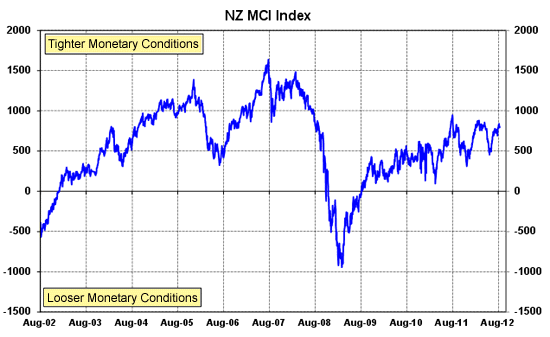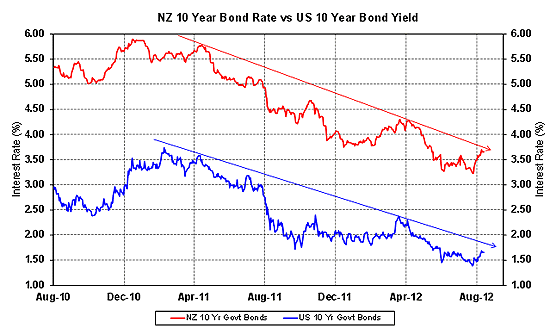
 By Roger J Kerr
By Roger J Kerr
To fix or not to fix is not so much the big question for borrowers with interest rate risk, the question is when to fix and for how long to fix.
The problem with the strategy of only fixing when the RBNZ start to lift the OCR is that the two to five year fixed rates could be up to 1% higher at that point in time than where they are today.
The dilemma is partially alleviated by fixing a proportion of the debt now and a proportion later when there is more certainty that all interest rates are headed higher.
Larger borrowers with increasing debt should be examining using swaptions (purchased options on borrower swaps) as a precautionary hedging strategy to ensure they lock into the record low rates that are still available.
While the domestic economic data is continuing to improve and GDP growth looks set to be +3.0% in 12 months time, there will be a natural reluctance from the RBNZ to lift the OCR upwards from 2.5% with the currency value so high.
The old combined interest rate and currency MCI Index (monetary conditions index) below shows that the recent TWI exchange rate increase to above 73 has monetary conditions much tighter than what is desirable (back up to +800 on the index).
The RBNZ therefore have the greater dilemma, they really have to wait for the NZ dollar to depreciate before adjusting interest rates higher.
However, if they leave interest rates too low for too long, the property market and domestic economy may run too fast and add to inflation risks.
The RBNZ also know that any increase in interest rates would push the Kiwi dollar higher in response. Who would be a central bank Governor?

The more likely trigger and cause of increasing interest rates in New Zealand is US 10-year Treasury bond yields lifting and thus dragging our three to 10 year term swap rates upwards.
The correlation between our 10-year NZ Government bond yields and the US is high and as the chart below shows the recent increase in yields has the downtrend line since early 2011 under threat of being broken at 1.80%.
The last two NZ Government bond tenders have not been too flash with dwindling investor interest.
The bull rally in bonds (lower yields, higher prices) may well have ended.

------------------------------------------------------------------------------------------------------------------------------
To subscribe to our daily Currency Rate Sheet email, enter your email address here.
------------------------------------------------------------------------------------------------------------------------------
* Roger J Kerr runs Asia Pacific Risk Management. He specialises in fixed interest securities and is a commentator on economics and markets. More commentary and useful information on fixed interest investing can be found at rogeradvice.com
1 Comments
The last two NZ Government bond tenders have not been too flash with dwindling investor interest.
Go on say it. The last one failed to get enough bids to cover the amount offered. That is normally considered disastrous, but in NZ for some reason a failed tender can be followed by a overbid one - we shall see.
To fix or not to fix is not so much the big question for borrowers with interest rate risk; the question is when to fix and for how long to fix.
The alchemy of rising rates and failed auctions maybe stop lenders offering anything that borrowers can afford to fix. The clearing rate may just move to a significantly higher level.

We welcome your comments below. If you are not already registered, please register to comment
Remember we welcome robust, respectful and insightful debate. We don't welcome abusive or defamatory comments and will de-register those repeatedly making such comments. Our current comment policy is here.